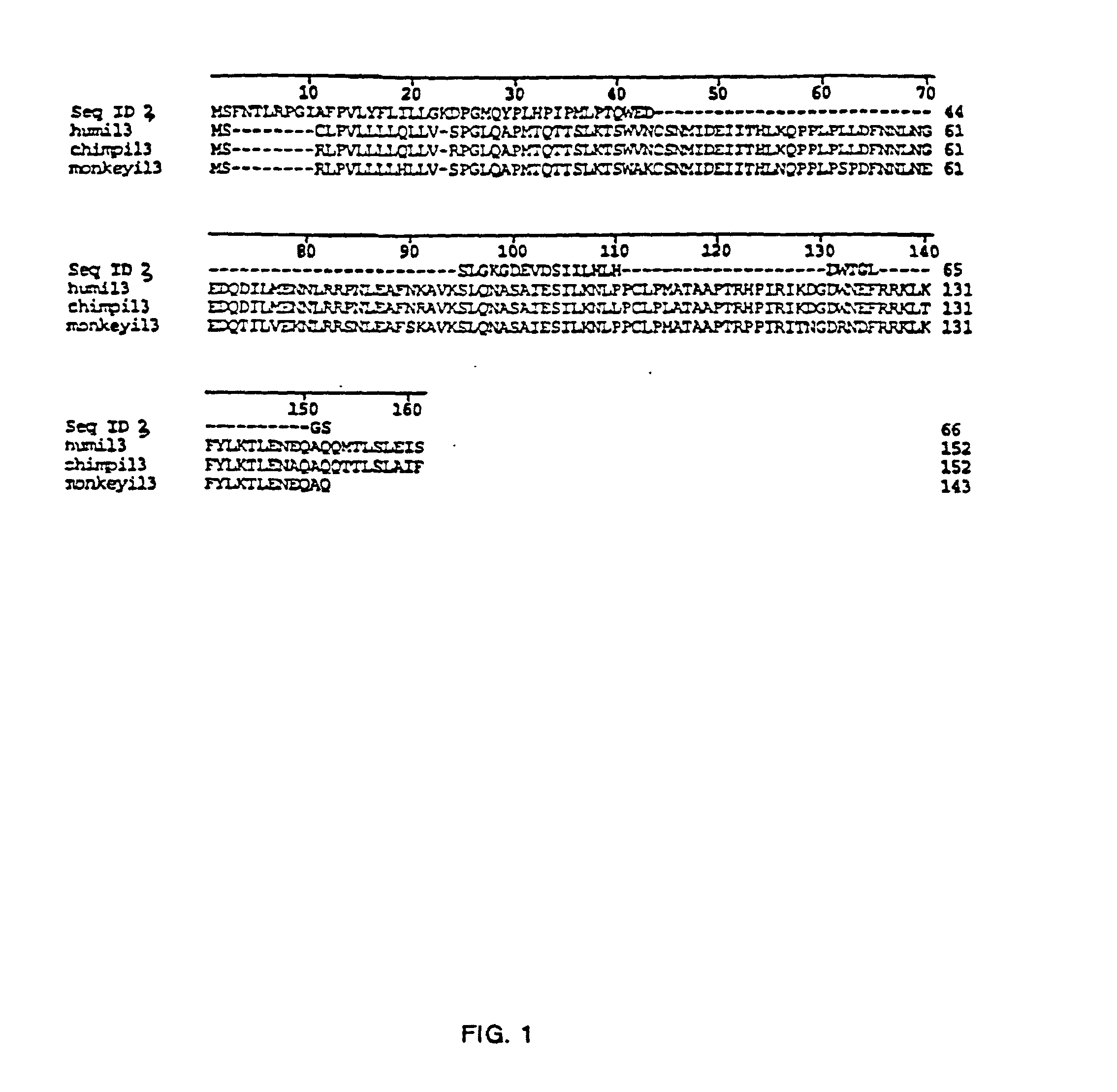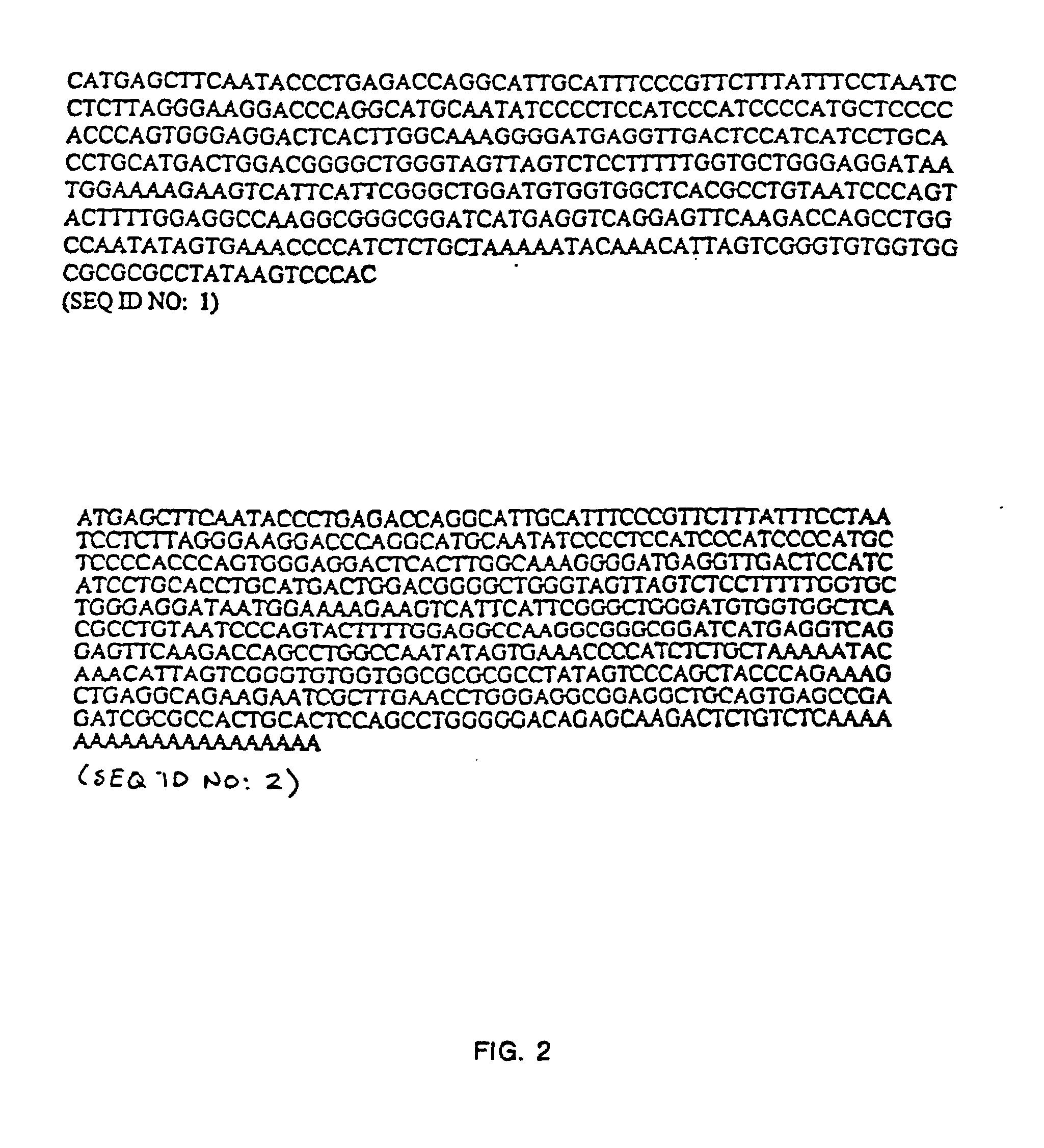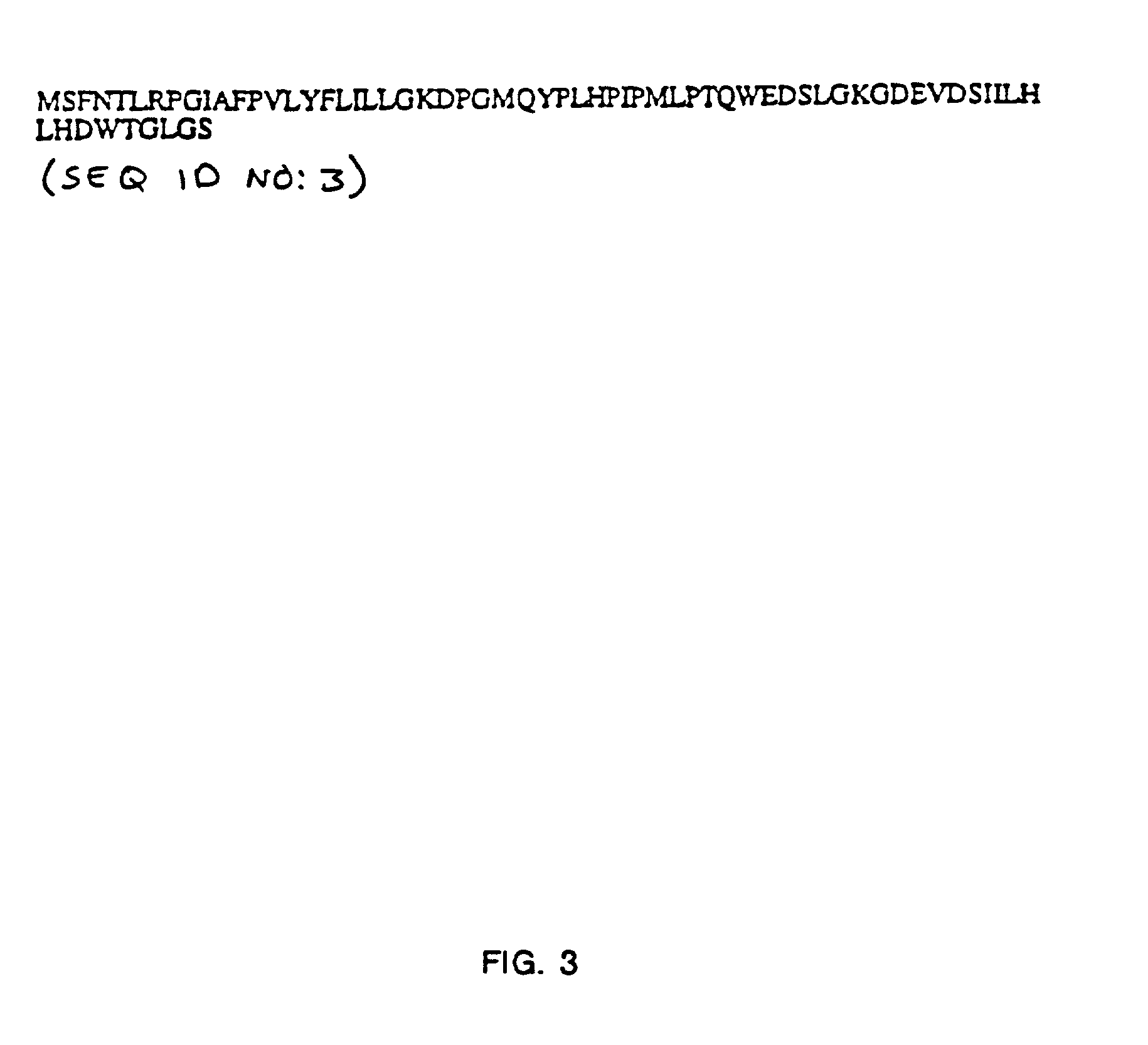Novel interleukin-3 and uses thereof
a technology of interleukin-3 and sequence, which is applied in the field of new nucleic acid sequences, can solve the problems of a major technical obstacle in the rate of determining the sequence of the four nucleotides in dna samples
- Summary
- Abstract
- Description
- Claims
- Application Information
AI Technical Summary
Benefits of technology
Problems solved by technology
Method used
Image
Examples
example 2
[0292] Probes Having Modified Oligonucleotides
[0293] Modified oligonucleotides may be introduced into hybridization probes and used under appropriate conditions therefor. For example, pyrimidines with a halogen at the C.sup.5-position may be used to improve duplex stability by influencing base stacking. 2,6-diaminopurine may be used to provide a third hydrogen bond in base pairing with thymine, thereby thermally stabilizing DNA-duplexes. Using 2,5-diaminopurine may increase duplex stability to allow more stringent conditions for annealing, thereby improving the specificity of duplex formation, suppressing background problems and permitting the use of shorter oligomers.
[0294] The synthesis of the triphosphate versions of these modified nucleotides is disclosed by Hoheisel & Lehrach (1990).
[0295] One may also use the non-discriminatory base analogue, or universal base, as designed by Nichols et al. (1994). This new analogue, 1-(2-deoxy-D-ribfuranosyl)-3-nitropyrrole (designated M), wa...
example 3
7.3 EXAMPLE 3
[0300] Selection and Labeling of Probes
[0301] When an array of subarrays is produced, the sets of probes to be hybridized in each of the hybridization cycles on each of the subarrays is defined. For example, a set of 384 probes may be selected from the universal set, and 96 probings may be performed in each of 4 cycles. Probes selected to be hybridized in one cycle preferably have similar G+C contents.
[0302] Selected probes for each cycle are transferred to a 96-well plate and then are labelled by kinasing or by other labelling procedures if they are not labelled (e.g. with stable fluorescent dyes) before they are stored.
[0303] On the basis of the first round of hybridizations, a new set of probes may be defined for each of the subarrays for additional cycles. Some of the arrays may not be used in some of the cycles. For example, if only 8 of 64 patient samples exhibit a mutation and 8 probes are scored first for each mutation, then all 64 probes may be scored in one cy...
example 4
[0306] Preparation of Labeled Probes
[0307] The oligonucleotide probes may be prepared by automated synthesis, which is routine to those of skill in the art, for example, using and Applied Biosystems system. Alternatively, probes may be prepared using Genosys Biotechnologies Inc. Methods using stacks of porous Teflon wafers.
[0308] Oligonucleotide probes may be labeled with, for example, radioactive labels (.sup.35S, 32P, .sup.33P, and preferably, .sup.33P) for arrays with 100-200 um or 100-400 um spots; non-radioactive isotopes (Jacobsen et al., 1990); or fluorophores (Brumbaugh et al., 1988). All such labeling methods are routine in the art, as exemplified by the relevant sections in Sambrook et al. (1989) and by further references such as Schubert et al. (1990), Murakami et al. (1991) and Cate et al. (1991), all articles being specifically incorporated herein by reference.
[0309] In regard to radiolabelling, the common methods are end-labeling using T4 polynucleotide kinase or high ...
PUM
| Property | Measurement | Unit |
|---|---|---|
| temperature | aaaaa | aaaaa |
| temperature | aaaaa | aaaaa |
| ionic strength | aaaaa | aaaaa |
Abstract
Description
Claims
Application Information
 Login to View More
Login to View More - R&D
- Intellectual Property
- Life Sciences
- Materials
- Tech Scout
- Unparalleled Data Quality
- Higher Quality Content
- 60% Fewer Hallucinations
Browse by: Latest US Patents, China's latest patents, Technical Efficacy Thesaurus, Application Domain, Technology Topic, Popular Technical Reports.
© 2025 PatSnap. All rights reserved.Legal|Privacy policy|Modern Slavery Act Transparency Statement|Sitemap|About US| Contact US: help@patsnap.com



